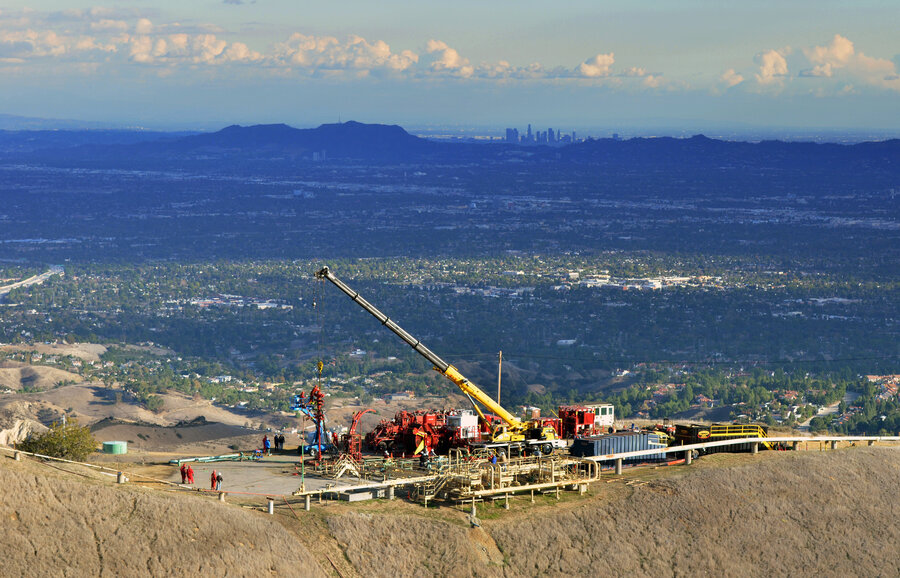Crews try to plug uncontained gas leak outside Los Angeles
Loading...
| LOS ANGELES
Crews will try to stop a leak Saturday from a massive natural gas storage well that has persisted for three weeks outside Los Angeles and alarmed nearby residents concerned for their safety and sickened by the stench.
SoCalGas said the rare leak from the Aliso Canyon storage field beneath the mountains near Porter Ranch poses no imminent health threat to community, though residents were warned to stay indoors Friday when an oily mist began spraying from the well.
An automated call telling them to hunker down only added to frustration they have felt since the company's initial denials of the Oct. 23 leak, a lack of a timetable for when it will be plugged and headaches and nausea some are experiencing.
While the company sent another automated call a couple hours later telling residents they could go outside, Laura Gideon said she planned to take her family to her mother's house across the San Fernando Valley.
She described the situation as "an absolute nightmare" and said she complained to the company several times.
"All they say is, 'We know it's a nuisance,'" Gideon said. "I say, 'It's more than a nuisance. I want to throw up. I don't want to go outdoors.'"
The company was preparing Friday to stop the leak by pouring a briny solution into the well when the oily mist sprayed and oily liquid spilled on the ground. It took about 90 minutes to contain the spray, said Javier Mendoza, a gas company spokesman.
SoCalGas won't speculate when the leak might be stopped, but Steve Bohlen, oil and gas supervisor for the state of California, said it could be as soon as Saturday. He said workers would permanently seal, or "kill," the well after the leak is stopped.
The leak detected Oct. 23 was initially believed to be a minor problem at the well head, though it was later determined there was a hole 480 feet down a pipe that leads to a deep underground reservoir where the company stores natural gas when demand is low, Bohlen said.
The hole is believed to have caused a pressure change that created an icy blockage that plugged the well, though gas continued to escape through the pipe casing and seeped up through the ground, Bohlen said.
The main safety concern has been around the well itself because a spark could ignite any accumulated methane and cause a fire around the well. The facility is located atop the Santa Susana Mountains, which are bone dry from the drought and can be raked by fierce winds that drive wildfires late into the year.
"In terms of having a catastrophic explosion, that kind of thing happens in Hollywood, not in real life," Bohlen said.
A crew from Boots & Coots Services, the company that helped extinguish oil well fires in Kuwait during the 1991 Gulf War, removed the icy chunk a week ago that plugged a nearly 3-inch pipe that extends a mile and a half underground where natural gas is stored in the cavities of an old oil well.
The storage facility is believed to be the largest of its kind in the West, capable of storing 86 million cubic feet of natural gas, which can supply Southern California for more than a month, Mendoza said.
The company said its own air samples have shown that none of the chemicals released from the well are a threat to public health, though air regulators are conducting their own tests.
The South Coast Air Quality Management District has received more than 270 complaints from people in the area and could issue violation notices, said spokesman Sam Atwood.
The odor that residents have complained about is from an additive used to make odorless natural gas detectable to prevent disasters from the flammable fossil fuel. It can be detected in tiny concentrations and some people are more sensitive to it.
Residents who first noted the smell said they were misled for days when they called the company and were told it was completing an annual purging of its lines before it acknowledged there was a serious problem.
"We apologized for miscommunicating early on," Mendoza said. "They may have received misinformation or may not have received accurate information, but no one was intentionally misleading."







